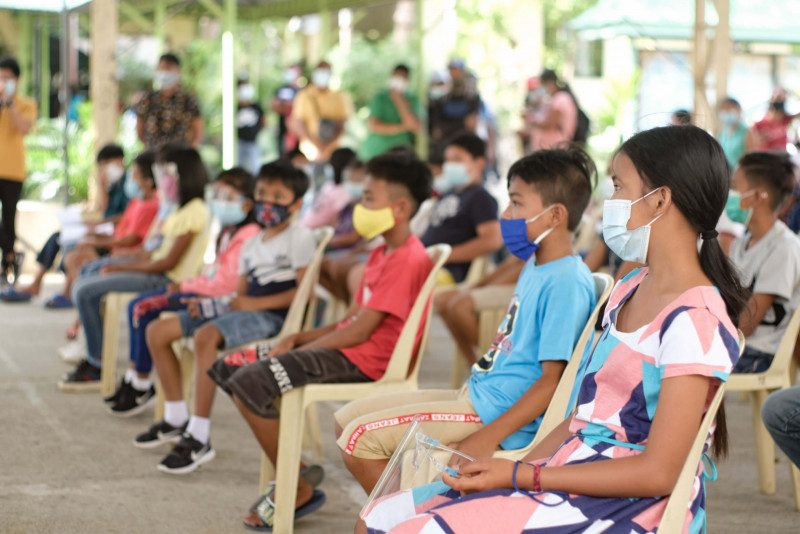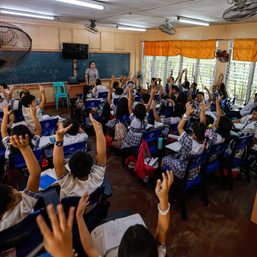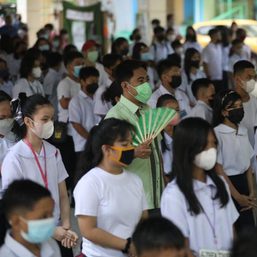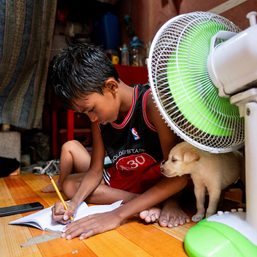SUMMARY
This is AI generated summarization, which may have errors. For context, always refer to the full article.

ILOCOS NORTE, Philippines – At least 989 barangays in the Ilocos Region lack elementary schools, according to a Department of Education (DepEd) study that reveals a long-standing basic education gap in rural communities.
The regional DepEd’s Policy, Planning, and Research Division (PRRD) conducted the study, “Schoolless Barangays” in the region’s four provinces: Ilocos Norte, Ilocos Sur, La Union, and Pangasinan.
It captured the situation in the region during school year 2019-2020, prior to the COVID-19 pandemic which uncovered and exacerbated the crisis in the country’s educational system.
The study found that 989 or about 30.27% of 3,267 barangays in the four provinces do not have elementary schools. The study covered 116 towns and nine cities in the Ilocos Region.
Regional DepEd’s Public Affairs Unit head Cesar Bucsit said on Thursday, March 17, that the purpose of the research was to find possible reasons why school-age children from remote areas were not enrolled.
“Considering na sa far-flung areas ay malayo po ang mga paaralan, naisipan po ng top management sa Region 1 na ilapit ang mga paaralan sa tirahan ng mga bata, para po wala nang rason para hindi sila mag-aral,” he said.
(Considering that schools are far in remote areas, the top management of Region 1 thought of bringing schools closer to the homes of children, so that there would be no reason from them not to study.)
This was why the study was conducted to determine the numbers of barangays and towns in the region where the “intervention” would be implemented, ensuring that no children from remote areas will be left behind and that their age should be “commensurate” with their grade level,” Bucsit said.
Bucsit said that while elementary schools are lacking, he clarified that there are more than enough secondary schools in the region located in 564 barangays.
What is required is one secondary school in one town or city, and Bucsit said there are 125 secondary schools for the 116 towns and nine cities in the region.
Ilocos Sur has 325 barangays without elementary schools, followed by 207 barangays in Ilocos Norte, 254 in La Union, and 203 in Pangasinan.
The Singson clan has dominated governance in Ilocos Sur for decades while Ilocos Norte is the home province of the late dictator Ferdinand Marcos and his family.
Cecilia P. Rosido, research team leader and PRRD Chief Education Supervisor, said that the lack of schools in remote villages in the region is a “paramount concern.”
The study shows how neglect in basic education stokes inequality.
Many pupils from remote areas that do not have public schools eventually drop out as their families struggle with transportation costs and allowances, the study revealed.
The study also found out that those who walk some distance to schools outside of their villages often have “lower grades” compared to those who travel using private vehicles and public transportation.
Students who have to travel outside the study’s catchment area – defined as within a two-kilometer radius in rural areas and one-kilometer radius in urban communities – have more absences than those who have shorter travel to school, decreasing their chance to complete a school year, the study showed.
Of almost 1.3 million enrolled basic education students in the Ilocos, at least 60,984 come from barangays without schools, the DepEd said.
Citing a 2014 DepEd order that backed the conduct of the research, the agency said the results could guide the agency’s top management in “bringing the schools closer” to the students.
There “should be at least one elementary school for every barangay in the country, and at least one high school for every municipality or city,” according to the DepEd order. – Rappler.com
John Michael Mugas is a Luzon-based journalist and an awardee of the Aries Rufo Journalism Fellowship.
Add a comment
How does this make you feel?





There are no comments yet. Add your comment to start the conversation.